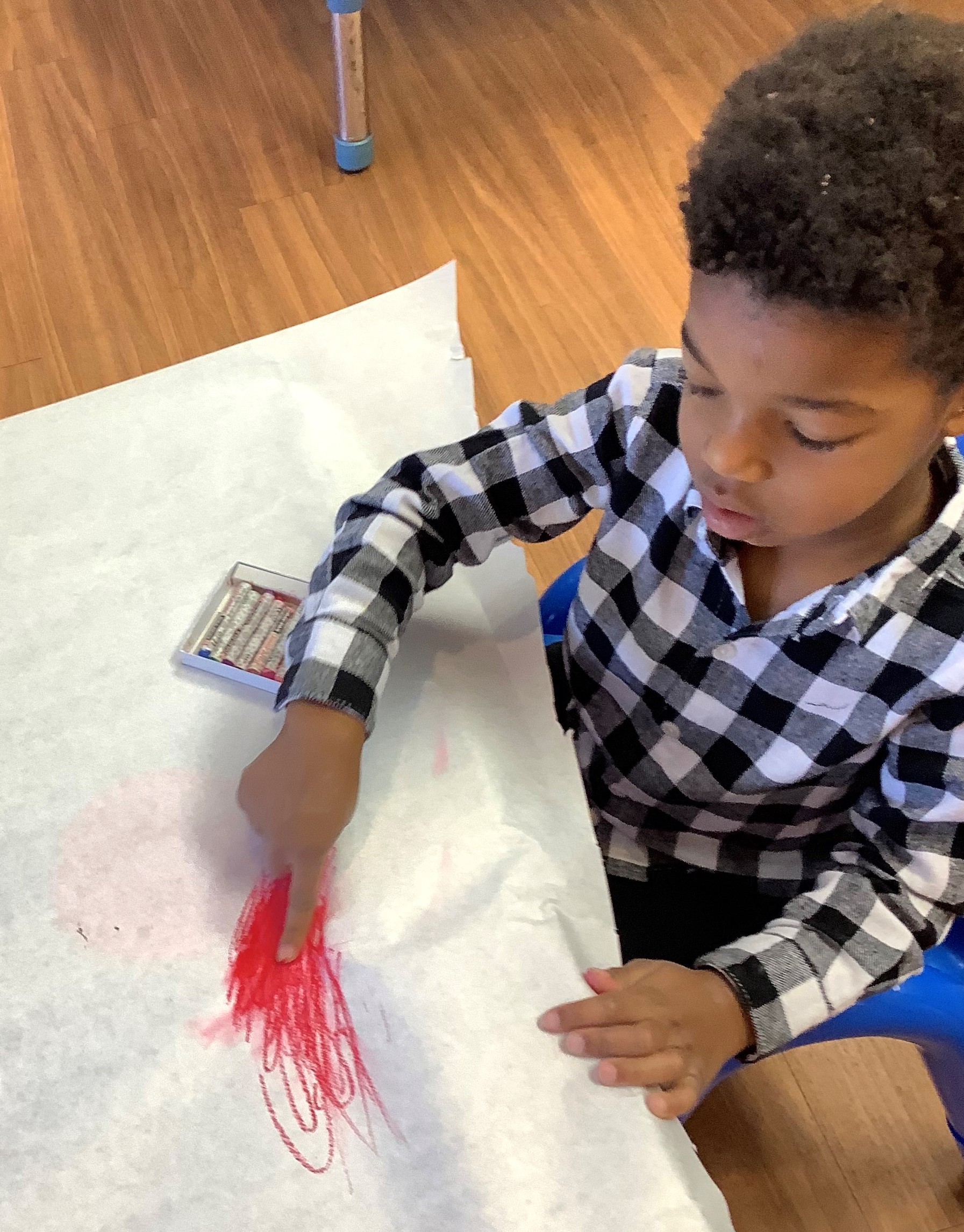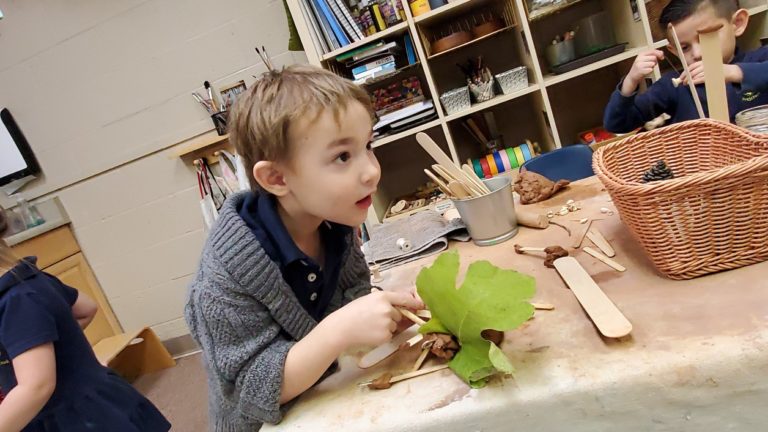By Miranda Brown and Kathryn Moon
Our study began with a question: When children are offered oil pastels – an art medium made with color pigment and a non-drying oil and wax binder -how will they compare this new material with what had already been available in the learning space? How can observing children help us to further understand their capabilities as learners?
As part of the Collaborative Planning Community of Practice (a First Things First sponsored professional development led by Paradise Valley Community College (PVCC), our staff at United Cerebral Palsy Early Learning Center engaged in an opportunity to learn through job-embedded professional development. Through the process of collaboratively researching documentation in consistent planning sessions, we studied children’s work and ideas to deepen our understanding and inform our practice.
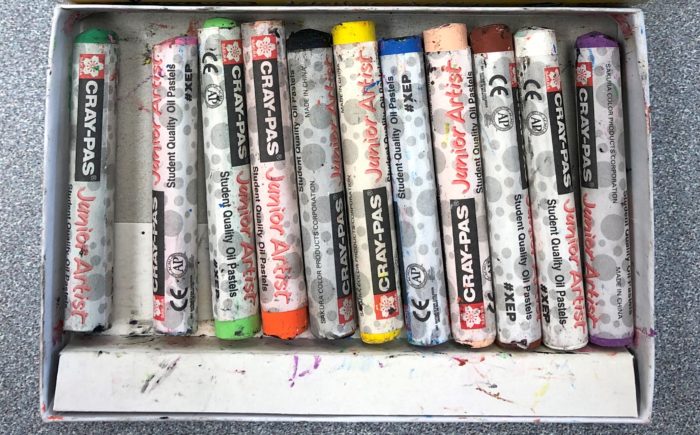
What unfolded was an 8-month long exploration of children’s mark-making, during which the preschool teachers offered various materials to children, and then studied how they used them. Throughout our study, we introduced these oil pastels along with a variety of other materials. We included metallic Sharpies, grease pencils, highlighters and transparency sheets, watercolor, large pieces of paper, and cardboard.
This mini-story focuses on our study of the oil pastels. Together with the children, we explored oil pastels and discovered their unique attributes – they had a softer, more desirable feel. As we observed and listened to the children, we asked ourselves more questions about how children interact with art and with different art media. Our study of the documentation showed us that children were particularly interested in oil pastels because they could blend them with their fingers, make bold color marks, mix colors, and create various types of lines.
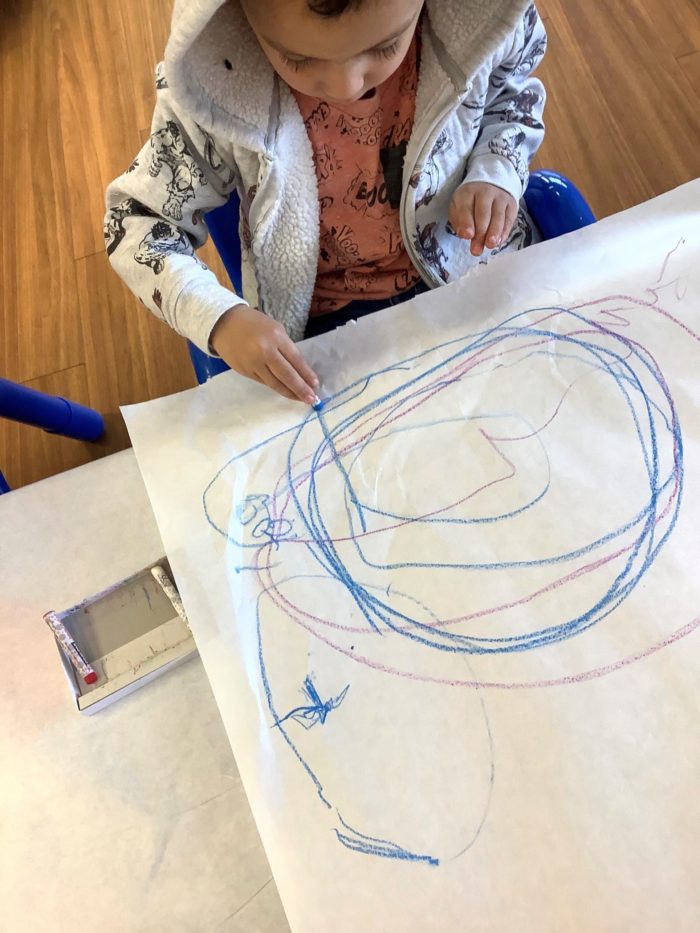
As children became more familiar with the many possibilities of the oil pastels, they started refining their control and describing the properties as “soft” and that they were able to “make different colors.” This emerged into an investigation into the use of oil pastels to blend and mix colors and discover different shades – something that cannot be done with regular wax crayons.
At times, the children worked individually. Other times, they created lines and shapes collaboratively. As teachers, we decided to provide prompts or themes some of the time, and set up the materials without guidance at other times. The teachers prepared a still life display with fresh fruit, and invited the children to draw what they saw from their perspective.
All of these experiences taught us so much about how children experience materials and make connections to the world. We began noticing that the children would sit and draw for long periods of time, adding increasing levels of detail in their work. Children who previously spent very little time drawing would spend half an hour designing pictures that depicted their lives and experiences.
“Children are autonomously capable of making meaning from their daily life experiences through mental acts involving planning, coordination of ideas, and abstraction…the central act of adults, therefore, is to activate, especially indirectly, the meaning-making competencies of children as a basis of all learning. They must try to capture the right moments, and then find the right approaches, for bringing together, into a fruitful dialogue, their meanings and interpretations with those children.”
– Loris Malaguzzi
The quality of the oil pastels – they were the same kind that artists use. The children had a great deal of respect for these materials. They took good care of them and they valued them in a way that we had not anticipated. They connected with the materials. The oil pastels were important to them. We felt a sense of appreciation from the children – perhaps they sensed that we cared about our young students deeply enough to offer artist-quality materials. That helped to build trusting relationships.
During this time, we asked the children if they preferred oil pastels or crayons. Melanie Akins, an artist and part-time early childhood staff member at PVCC, studied the children’s answers to this question along with some of their drawings. She created this poster.
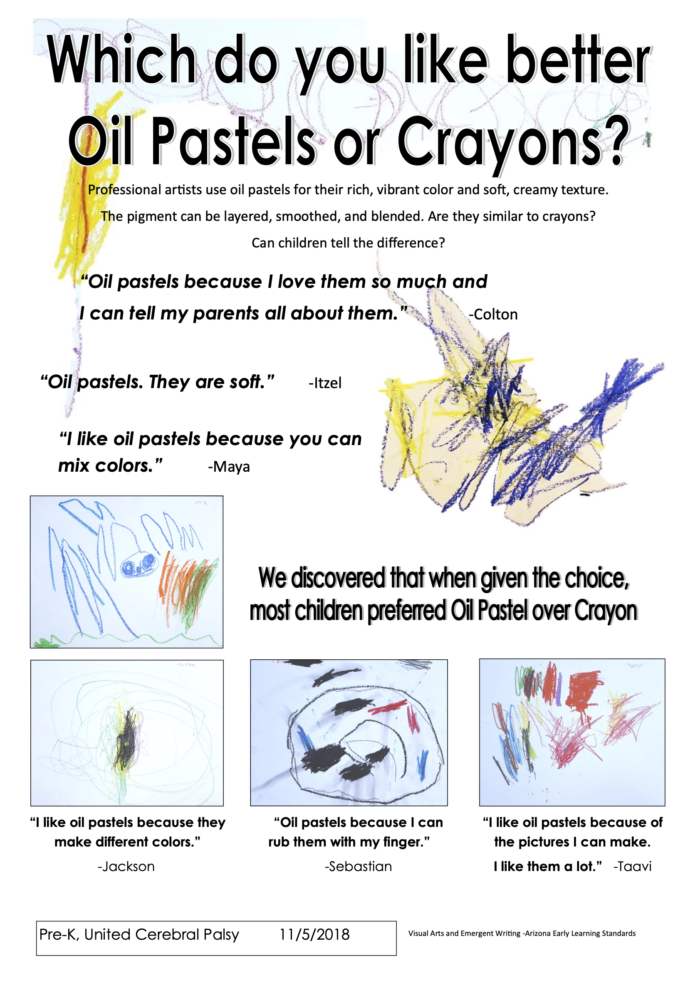
Families were given copies of the poster, and many decided to purchase higher quality oil pastels for their children to use at home. There are many options for oil pastels from art stores such as Blick Art Materials or Arizona Art Supply. The brand we used was Sakura Cray-Pas Expressionist Oil Pastels.
Children deserve more than just the typical markers and crayons most programs offer.
And why not provide those materials for them? In our study, children preferred these materials because of their potential to help them represent their ideas and create the outcome they desired.
VIDEO: Miranda Brown talks about the value of quality art materials for young children and the importance of teacher collaboration.
The children noticed the difference in the qualities of materials. The oil pastels offered much more than simply trying out a new art medium. Their use promoted storytelling, showed children’s capability to make marks, and gave new meaning to the art experience in our learning space.
The children – with the educators’ support – discovered and embraced blending, which is a complex concept and process. This experience allowed children of varying abilities opportunities to explore, collaborate and make marks.
We’ve moved on to new studies but we continue to provide a variety of quality art materials and we explore many art techniques with the children. We’ve realized that providing a variety of art materials is about more than making pictures. Because we explored the art materials alongside the children, we co-constructed our knowledge about the potentials of these materials.
Providing children with quality art materials gave them a way to express their creativity and to use materials as a language to show their ideas and interpretations, and to advance their desired outcomes.
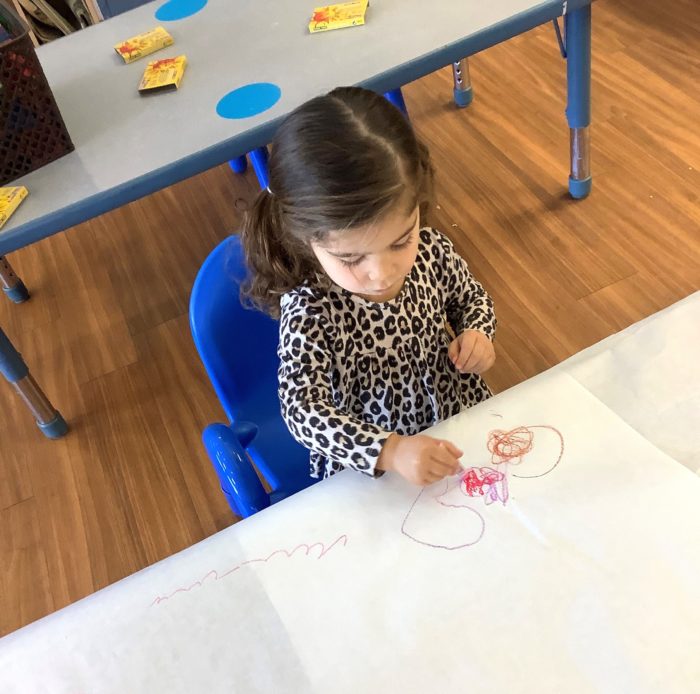
These 8 months gave us deeper insight into our small group of children. If all children had access to these materials and experiences, how would that change the way they viewed their rights as children? If all teachers had access to reflective, collaborative professional development, how might it help them to better understand children’s thinking and ways of meaning-making?
Kathryn “Katy” Moon is the director of the United Cerebral Palsy of Central Arizona’s Early Learning Center. Miranda Brown is the lead preschool teacher at United Cerebral Palsy of Central Arizona’s Early Learning Center.
About the Early Learning Center
As both an inclusive early learning center and a therapy clinic, the United Cerebral Palsy Early Learning Center serves both typically developing children and children with special rights from six weeks through five years. The goal is to offer welcoming classroom environments where, together, all children are accepted and included.
About the Collaborative Planning Community of Practice
The Collaborative Planning Community of Practice professional development program is organized by Paradise Valley Community College (PVCC) and is supported by funding from the First Things First Phoenix North Regional Partnership Council. Collaborative planning provides opportunities for educators to work together to exchange ideas and observations and make connections. The process of collaborative planning deepens our understanding of how children think and construct theories, illustrates how children reveal their understandings and ideas, and serves to suggest meaningful curriculum that engages both children and adults as authentic learners.
All photos courtesy of the United Cerebral Palsy Early Learning Center.
Poster design by Melanie Akins.

